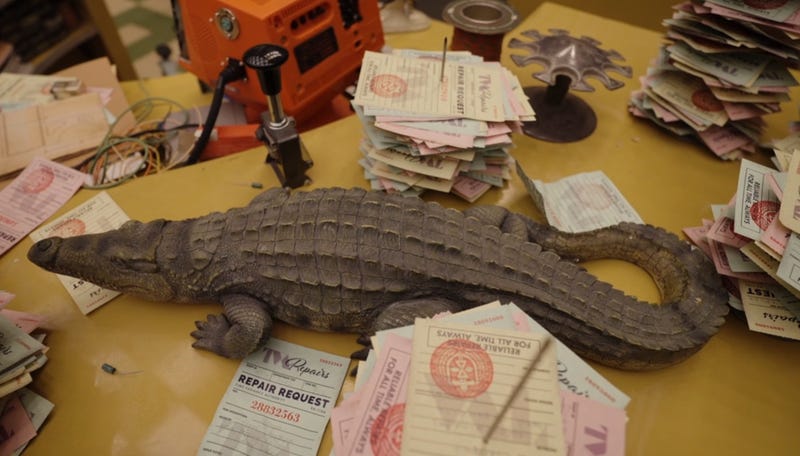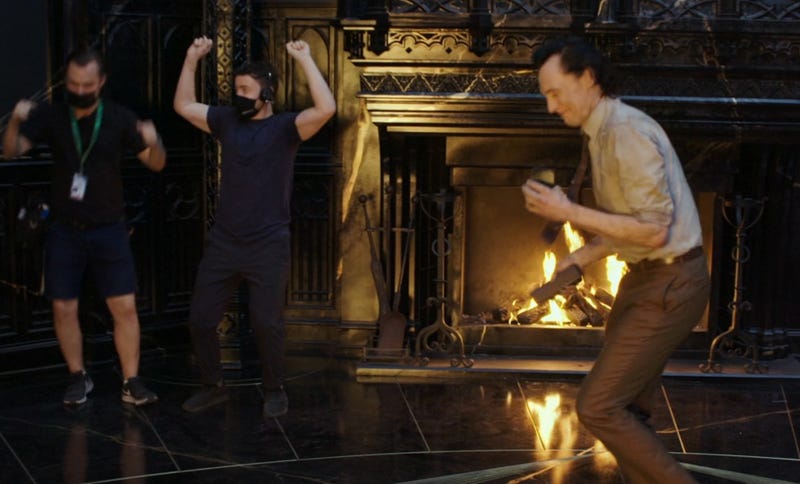Loki season two is officially in the books and to say it changed the scope of the Marvel Cinematic Universe would be an understatement. The show completed a character arc that didn’t just run through both seasons of the Disney+ show, but over 15 years of films too. Tom Hiddleston’s Loki started as a selfish, arrogant, evil villain—and slowly but surely, even through death, became the selfless, proud, heroic God he was born to be.
So how did Marvel Studios get there? All is revealed in Assembled: The Making of Loki Season 2 which is now streaming on Disney+. The hour-long documentary dives into the making of the show’s second season and is filled with fascinating facts. Here are just a few of our favorites (with the bigger spoilers saved for the end).
The actual Sacred Timeline

At the start of the documentary, Tom Hiddleston reveals that filming for season two began June 13, 2022 in London and was scheduled for 90 days. Episode one was released October 5, 2023, so you get an idea of just how long something like this takes.
Why McDonald’s?

Sylvie herself, Sophie Di Martino, talks about finding her character at McDonald’s this season. Apparently, at the end of season one, a producer asked her what she thought Sylvie would do after killing He Who Remains. She told him she’d be very, very hungry. That joke, combined with the character craving a slice of human normalcy, is how she ended up at the fast food chain.
An animated Miss Minutes?

Early in development, there was talk of Miss Minutes being completely 2D cell animated. Which would have been awesome. Unfortunately, it was deemed much too expensive and so they went with CGI. On set, the character was represented by a lamp.
Alligator Loki Easter egg

Though I’m not sure if you can see it in the show, the documentary clearly shows that O.B.’s repair space in the basement of the TVA has a small alligator in it. Is it a reference to everyone’s favorite season one Loki variant? Seems possible.
The call made him cry

Season two Loki star (and recent Oscar winner) Ke Huy Quan, tells the story of how he got cast on the show. It involves Kevin Feige calling him and Quan getting so emotional, he had to pull his car off the road so he could cry.
General Hiddleston

Obviously, Tom Hiddleston is the star of Loki, but the documentary makes it clear he’s so much more. His fellow actors say he sets the tone in terms of energy. He also is involved in writing, visual effects, directing, all of it. Hiddleston is all over the place and became almost the leader of the show.
DJ Tom

In addition to being a huge presence in the making of the show, Quan reveals that each day on set, Tom Hiddleston would arrive with a portable speaker blasting music to wake everyone up and start the day.
Time slipping

There’s a great segment in the documentary breaking down all the elements that went into the VFX of time slipping. It’s described as “being born and dying at the same time” and is a combination of Hiddleston doing violent movements on set, VFX linking them, sounds, and so much more.
Mobius’s home town?

Season two of Loki finally explored the background of Owen Wilson’s character Mobius, and the documentary shows a little bit more. We learn that his job at Piranha Powersports is located in Cleveland, OH, based on the 216 phone number on his business card.
Director promotions

While Moon Knight directors Aaron Moorhead and Justin Benson helmed the bulk of season two, two long-time Marvel collaborators got their first shot in the director’s chair this season. Episode two was directed by Dan DeLeeuw (above), an Oscar-nominated Marvel visual effects supervisor, and episode three was directed by Kasra Farahani, season one’s production designer.
700-page bible

Moorhead and Benson did so much prep in pre-production, their cinematographer Isaac Bauman took that and used it to create a 700-page book breaking down the visual language of the show. That book exists somewhere!
Rainbow light

To get a specific rainbow light that would come off the loom at the TVA, the team spent 20 weeks preparing a way to project light that looked like a rainbow.
Spoilers coming for the following images.

The first, not as good, ending

In early drafts, the Loki finale was similar to what ended up on screen, but with a few key changes. Instead of having Loki destroy the loom, he simply saved it, then ascended to his throne. Something wasn’t sitting right with the team though and they realised he shouldn’t save the loom, he should become it, making the ultimate sacrifice.
Final costume breakdown

One of the best moments of the documentary is Tom Hiddleston, in his final costume, breaking down what it means with the costume designer Christine Wada (above). To them, it represents a redefinition of Loki himself. The colors are familiar, but it’s softer. There is no more armor. It’s vulnerable. A blend of a king and a monk.
